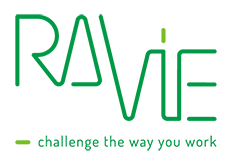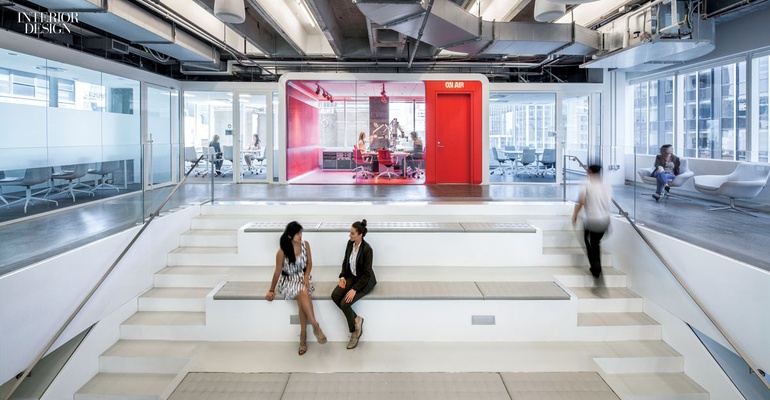Blended lifestyles shape tomorrows office
Framing the workplace
Before entering ‘the work army’, I believed having a job would be a daily routinous obligation to make a living. My workplace would be a desk in an obscure office, where you were doing ‘things’ with pens, paper and people. I was lucky to not end up like this: my career started off with a laptop, and -as a consultant- I had quite a nomadic existence. Over the years I was able to develop a work style that suits me: my projects, my ideas, my ambition, my life. This was also possible due to a changing world of work: where you work has become little dependent on the traditional office.
Blended lifestyles
I believe today work has become part of a blended lifestyle with little or no boundaries between work, social & family life, travels or social involvement. Work is still a very important aspect of life, next to taking care for parents or children, being an active part of your community, playing soccer or the violin. Thanks to this changing context, we are enabled to get creative in finding our personal blend. Where work gets more open on the one hand, we can personalise it more on the other.
Where are we heading in work and what is the meaning of the workplace today, if the office has no longer the monopoly on it? Over the last years we’ve seen organisations change their way of working to activity based environments, a concept in which flexibility is key. But what’s next? This is the first of a series of blogs that explore major trends in work and relate it to the way we create and experience the workplace. What trends influence our ideas on what work and the workplace is about? How to create an office that fits tomorrows needs?
Trends in work
A first important influencer on how we work and the way we think about it is the continuous push of technology. And its impact is huge. Artificial intelligence further shifts tasks from man to computer: we simply cannot do without technology to perform our jobs. Moreover, as the Internet made the world more bite size, both online and offline mobility are increasing. As we are 24/7 connected and information is online available, doing your work is not longer bound to the office.
Secondly, over the last ten years a different mind-set emerged on how we value and use the office. The idea of not working in the office is no longer for the privileged few, but has in fact become common, in particular in metropoles like Amsterdam and Paris. Not only the transition of organisations to activity based concepts added to the acceptance of the idea that one can work everywhere, also the growth of the army of independent professionals without a dedicated office helped create a more flexible mind-set; over the last years many professionals (both employees and independent workers) worked from home or a third workplace.
A third important shift in the perception of work are changing demographics; currently we see a multigenerational workforce evolve in which a growing group of older employees coworks with the generation Z who have quite different ideas and expectations of what work should look like.[1] Besides interesting opportunities to foster exchange and collaboration between them, the different generations have different expectations on what a workplace is about and how it supports you in getting things done.
Workplace design
This brief exploration demonstrates a new conception of work and the workplace, as we already left the idea of a dedicated desk for each employee, and some of us don’t need an office all together. “Work is where my laptop is”, designer Daan Rosengaarde once called it. I think it sums up perfectly the idea on how work works nowadays. Your device is your office, your social connector and the machine that facilitates your productivity.
What does that mean for organisations if the need for a dedicated workplace in the office diminishes? How to keep improving performance, foster talent and knowledge? What does it take to design the office of tomorrow?
The impact of the trends mentioned above is already visible in the way offices are designed and built today and reflect how they will further evolve. Todays office is no longer a place where you go and do individual tasks at hand, but it is a place for co creation and collaborative thinking. Modern office buildings also reflect the idea of blurring boundaries, as they are built with maximum transparency; leaving in loads of daylight, offering public cafes in entrance areas and creating green spaces to emphasize the connection with the world outside. Also, some organisations start experimenting with sharing part of their office as third workplace to others[2]. Similarly we see experiments facilitating a personal workstyle inside the office, in which spatial solutions and workflow follow the individual needs and preferences. For example by offering flexible flexible ergonomics and intelligent technology.
In the years to come, I believe the office will evolve to a hub where your meet, connect and get inspired, pushed by the before mentioned trends and a growing group of self conscience employees. Organisations will become more open and the office will follow: it will support our blended lifestyles. I will explore this in upcoming blogs.
Let’s start with changing the way we perceive the office: not as a static work environment, but as dynamic place for cross pollination and growth. The office is, just like work, never done. By creating an environment that can accomodate a changing context, we will be able to build a truly adaptive, inspiring and effective workplace for diverse people in an ever changing reality of work.
Jetske Roetman
Jetske Roetman works as consultant and trainer in organisational behaviour and (co)working in networks. She is co founder of Ravie, an expert network in NWoW and organisational development and PLUG de dag, a network for professionals in Amsterdam. This is the first of a series of blogs on personal work style design.
[1] Read for example: Lynda Gratton, Professor of Management Practice at London Business School who wrote ‘The Shift: The Future of Work is Already here’ (London, 2011)
[2] In the Netherlands, Seats2Meet offers an online community to share office space, some Dutch companies like Interpolis experiment with this.

